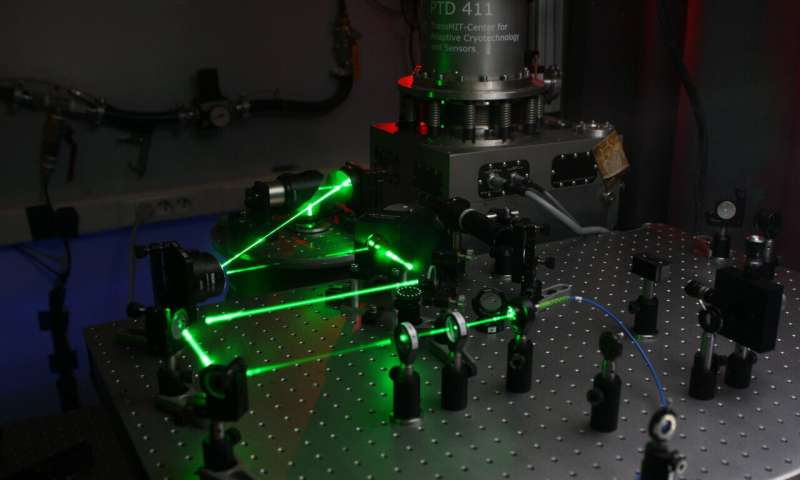January 4, 2021 feature
Researchers isolate single artificial atoms in silicon

Silicon has proved to be a highly valuable and reliable material for fabricating a variety of technologies, including quantum devices. In recent years, researchers have also been investigating the possible advantages of using individual artificial atoms to enhance the performance of silicon-based integrated quantum circuits. So far, however, single qubits with an optical interface have proved difficult to isolate in silicon.
Researchers at Université de Montpellier and CNRS, University Leipzig and other universities in Europe have recently successfully isolated single, optically active artificial atoms in silicon for the first time. Their paper, published in Nature Electronics, could have important implications for the development of new silicon-based quantum optics devices.
"Our study was born from the will to isolate new individual artificial atoms with a telecom optical interface in a material suitable for large-scale industrial processes," Anaïs Dr.éau, one of the researchers who carried out the study, told TechXplore. "We are used to investigating these quantum systems, but in wide-bandgap semiconductors, such as diamond or hexagonal boron nitride. Although silicon is the most widespread material within the microelectronics industry, so far no light emitter has been reported in this small-bandgap semiconductor."
The recent work by Dr.éau and her colleagues demonstrates that isolating single fluorescent artificial atoms in silicon is actually possible. The individual photons emitted by the resulting device operate at telecom wavelengths, which are particularly favorable to achieve long-distance propagation in optical fibers.
To effectively isolate single artificial atoms in silicon, the researchers employed a unique strategy. Their strategy combines concepts from the field of materials engineering with a specific experimental setup optimized for the detection of single near-infrared emitters.
"We started from a silicon-on-insulator wafer in which we created a low concentration of fluorescent defects by implantation of carbon atoms," Dr.éau said. "Secondly, we built a new experiment of confocal microscopy operating at low-temperature (10K, -263°C) with a high spatial resolution and a high sensitivity in the near-infrared range to enable the detection of very weak optical signal emitted by individual optically-active point defects."
Silicon-on-insulator wafers have a number of advantages, the most notable of which is that they can be directly used to manufacture high-quality photonic chips. The incorporation of individual optically active point defects in these chips could ultimately enable the creation of more comprehensive or versatile quantum optics and photonics tools.
"We were the first to isolate single-photon emitters in the most widespread material of the microelectronics industry: silicon," Dr.éau said. "Furthermore, these artificial atoms based on single fluorescent point defects have the great advantage of emitting single-photons directly at telecom wavelength, which is convenient for long-distance propagation inside optical fibers."
In the future, the strategy for isolating single artificial atoms in silicon introduced by Dr.éau and her colleagues could aid the development of a variety of new technologies. For instance, it could facilitate the development of integrated quantum photonics tools, in which optically active defects that are directly embedded in silicon quantum chips can generate photonic quantum bits and thus process quantum information.
In addition, the study could be an initial step toward the detection of an additional quantum degree of freedom linked to the electron spin of an embedded defect. In the future, the coupling of the emission of single telecom photons to the spin control could enable the development of a quantum spin-photon interface for large-distance quantum information exchange.
"We now plan to incorporate the individual fluorescent defects we isolated in silicon-based nanostructures such as waveguides and control their single-photon emission in order to enable the implementation of quantum photonics algorithms," Dr.éau said. "We also want to tackle the control the electron spin attached to these artificial atoms, as it could be used to implement a quantum memory. In the long term, our goal is to develop a Si-based quantum spin-photon interface operating at telecom wavelength for applications in quantum communication networks."
More information: Single artificial atoms in silicon emitting at telecom wavelengths. Nature Electronics(2020). DOI: 10.1038/s41928-020-00499-0.
© 2021 Science X Network




















